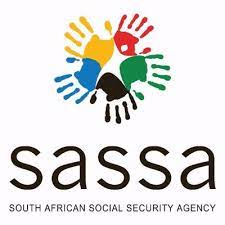Often referred to as the eyes of medicine, radiographers provide an essential service within the healthcare sector. Their work assists doctors to treat patients more effectively and contribute to the general well-being of patients.
Radiography is the area of healthcare where radiation is used for the diagnosis and treatment of patients. This is done by providing images of the tissues, organs, bones, and vessels that comprise the human body.
A radiographer is responsible for producing these diagnostic images of the patient that radiologists use to diagnose patient conditions. Radiographers are trained to appropriately use the technology that produces these diagnostic images and care for the patient.
Different Types Of Medical Imaging
There are several different types of medical imaging which include Diagnostic Radiography, Nuclear Medicine, Radiation Oncology and Ultrasound. Each has a distinctive set of characteristics used for several different medical functions.
Nuclear Medical Radiographers work in medical fields where radioactive means are used in diagnosing and training diseases. They are also responsible for the preparation and application of radioactive agents.
Radiation Oncology is when the therapeutic radiographer is responsible for immobilisation and localisation procedures, accurate dosage planning and application of treatment by means of ionising rays to patients with tumours according to the prescription of a radiotherapist.
Diagnostic Radiographers are responsible for forming and capturing diagnostic images of patients. X-rays as well as computers may be used by diagnostic radiographers to form these diagnostic images on film.
So how does one become a radiographer in South Africa? Careers Portal spoke to Nathaniel Bent, who works as a Diagnostic Radiographer in the Western Cape.
How To Become A Qualified Radiographer In South Africa
Nathaniel obtained a Bachelor of Science (BSc) in Diagnostic Radiography from the Cape Peninsula University of Technology (CPUT).
In order to secure admission into the programme, they had to meet several admission requirements which included completing the National Senior Certificate (NSC) exams and passing Mathematics, Life Sciences and Physical Science.
The qualification criteria for Radiography qualifications may vary depending on the institution.
The BSC in Radiography at CPUT is a four-year programme. These four years are split between lectures in which theory is covered and clinical time where students learn by working as radiographers. The clinical time increases as students progress through the four-year programme.
Radiographers must register with the Health Professions Council of South Africa (HPCSA) before they begin working as student radiographers. The HPCSA has certain requirements for clinical experience to be gained during the student’s training which they must complete before their registration as a qualified radiographer.
Like other graduates in the medical industry, newly-qualified radiographers are required to complete a year of community service at a public healthcare institution. Upon completion of their BSC, Nathaniel completed his year of community service in the Northern Cape.
Day To Day As A Radiographer
After a year of community service, radiographers are free to pursue their career ambitions. Radiographers can be employed in public or private hospitals, clinics and healthcare facilities. They can also be employed by training bodies, companies supplying specialist equipment or start their own practice.
You can get placed in different departments such as CT [Computerised tomography], fluoroscopy, general X-rays or in theatre, so you have to prepare yourself for the day as it can become busy.
Nathaniel’s work may vary from day to day as it depends on the shift you are working and where you are placed. He explains that preparation is key as the day can become busy.
This preparation comes in the form of cleaning the consultation rooms, ensuring all the equipment is working, consulting with team members and ensuring that ample stock is available.
Working well under pressure is a quality that a radiographer must possess. This as you may have many patients who have different needs and require a different service.
You have a lot of patients that you have to see and each of them has different ailments, and you still need to get your examinations done. So you have to have a lot of patience, remain calm under pressure and you must have a sunny disposition as you working with people and they deserve the best service you can give
Radiography can also be challenging. Possible mistakes made by radiographers can have lasting consequences for patients. You also deal with different patients who may have different attitudes.
A broken bone or an internal issue can be extremely painful.
Nathaniel says it’s therefore important to have empathy and consider why the patient may be acting or reacting in a certain way.
There are several institutions of higher learning that offer radiography courses in South Africa. Prospective students are encouraged to do further research to ensure that a career in Radiography will suit them.





